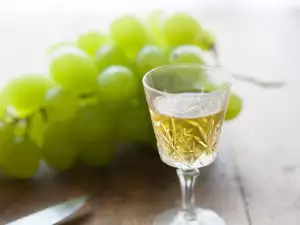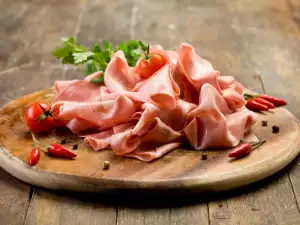Pinot Meunier is a red wine grape variety from the regions of Burgundy and Champagne, France. Besides in France, Pinot Meunier is grown in Australia, Germany, New Zealand, Austria and California. The variety is known also as Miller's Burgundy, Plant Meunier, Black Riesling, Gris Meunier, Müllerrebe and others.
Pinot Meunier is very common in Champagne, where it is used to make champagne. Even so, it remains in the shadow of its much more well-known kindred - Chardonnay and Pinot Noir.
Usually it is added to blends with them but for one reason or another, it never plays the major role. Pinot Meunier has a lighter color than Pinot Noir but its acidity levels are higher. Pinot Meunier is characterized by a medium-sized grape cluster, dense and cylindrical-conical. The grapes are small with a blue-red color.
Even if it is a little underrated in comparison to its rivals, Pinot Meunier has plenty of advantages over them. First off, it has higher acidity levels than Pinot Noir and Chardonnay, it can thrive in the northernmost parts of the region and to top it all of, can boast of better yields than Pinot Noir.
One of the possible reasons why winemakers from Champagne include Pinot Meunier in only a small portion of their blends is the fact that it does not have a great aging potential and gives ground to its competitors with regard to quality and finesse.
Pinot Meunier is a variety that blooms late, ripens early and develops very quickly in the bottle, for which it is extraordinarily suitable for wine blends that go out on the market earlier.
This variety grants substance, softness, balance and a pleasant fruit flavor to the wine blends it is included in. Wine varieties made only from Pinot Meunier are rarely seen, produced predominantly in Australia.
Characteristics of Pinot Meunier
Compared to Pinot Noir, Pinot Meunier gives light and colorful wines with slightly higher acidity levels but the sugar and alcohol content are nearly identical in both. As part of the standard champagne mixture, Pinot Meunier contributes to the aromatic fruit flavors of the wine.
Champagne with higher levels of Pinot Meunier does not have as much potential for aging when compared to champagne produced mainly from Chardonnay or Pinot Noir. Because of this, Pinot Meunier is most commonly used to make champagne intended for consumption while still young and has a soft aroma.

In Germany, Pinot Meunier is used to make stylish red wines, which can vary from light and nearly dry, to rich, dry and with notable flavors.
In California, American champagne producers began planting Pinot Meunier in 1980. In Australia, the grape has a longer history in the manufacture of wine of this variety when compared to the manufacture of Pinot Noir wine.
In New Zealand, winemakers began the production of champagne and wines from Pinot Meunier not too long ago. As a red wine variety, Pinot Meunier is known for its light fruity taste, moderate acidity and low tannins.
Serving Pinot Meunier
The light, fruity taste of wines made from Pinot Meunier goes excellently with foods such as tuna, shrimp, tomato salad with onions, squid. Wines aged longer are server with pizzas or even sushi.
And since Pinot Meunier is generally used to make champagne, we will now list the foods that go well with the delightful sparkling drink. Champagne pairs superbly with various types of food. These include fruits, nuts, mushroom appetizers of all sorts, pasta, risotto, hard cheeses like parmesan, gouda and cheddar. Vegetables, fish and seafood are another fine choice for champagne.
Fowl, veal, pork and lamb served with a glass of champagne turn into a delight for the palate. Asian cuisine is highly suitable for dry champagne because its acidic nuance makes for an elegant complement with those spicy foods.
The driest types of champagne are befitting to sushi and Mexican food. Almost all types of desserts with fruits or fruit creams, as well as everyone's favorite chocolate are appropriate for dry champagne.
















Comments